Highlights (one pagers)
Jump to physics highlights.
Methodology Highlights
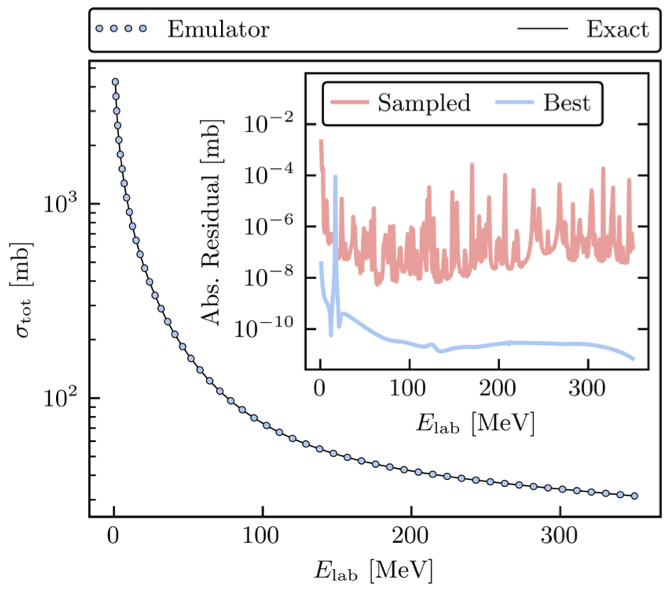
Bayesian analysis for experimental design often requires very many calculations with different parameters, which is too expensive. Here we extend Eigenvector Continuation to create emulators that calculate two-body scattering observables directly (i.e., without needing wave functions).
Contact: Dick Furnstahl (furnstahl.1@osu.edu)
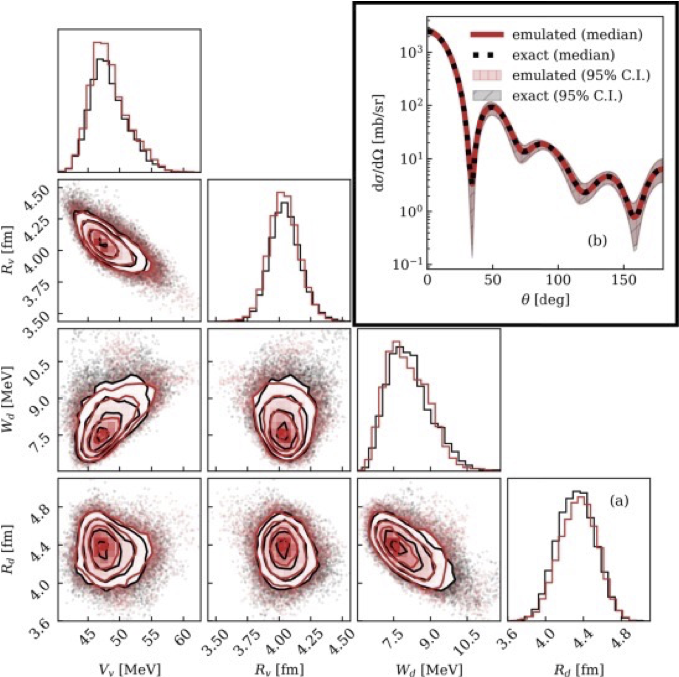
Fast & accurate emulators are needed to perform Bayesian analyses for complex nuclear reactions. We construct an emulator using Eigenvector Continuation applied to the (general) Kohn variational principle (KVP) that avoids Kohn anomalies.
Contact: Filomena Nunes (nunes@frib.msu.edu)
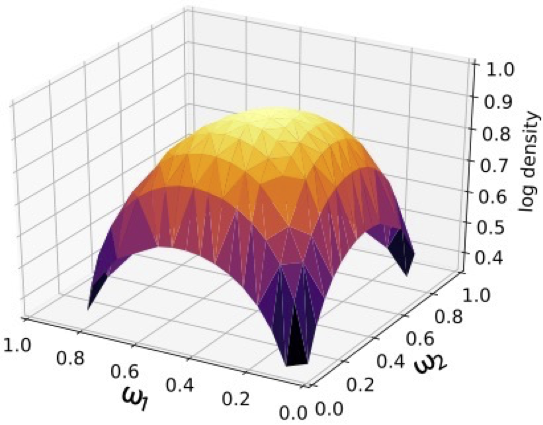
To improve the predictability of complex computational models in the experimentally-unknown domains, we propose a Bayesian statistical machine learning framework utilizing the Dirichlet distribution that combines results of several imperfect models.
Contact: Vojta Kejzlar (vkejzlar@skidmore.edu)
and Witek Nazarewicz (witek@frib.msu.edu)

The Reduced Order Scattering Emulator (ROSE) is a piece of the Bayesian Analysis of Nuclear Dynamics Software framework that enables full Bayesian analysis of nuclear reaction data. ROSE uses the Reduced Basis Method to dramatically reduce the dimensions of the wavefunctions and operators that describe scattering. It’s ability to efficiently and accurately solve the Schrödinger equation as the parameters of the nuclear interaction governing the scattering greaty speeds up the calibration of nuclear reaction models.
Contact: Pablo Giuliani (giulianp@frib.msu.edu)
Jump to methodology highlights.
Physics Highlights
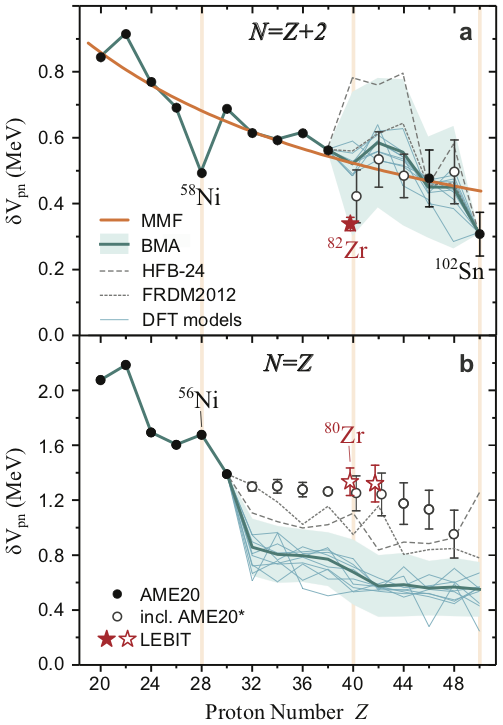
This work provides evidence for the existence of a deformed double shell closure in 80Zr through high precision Penning trap mass measurements of 80-83Zr. A statistical Bayesian model mixing analysis is used to interpret an observed mass anomaly.
Contact: Witek Nazarewicz (witek@frib.msu.edu)
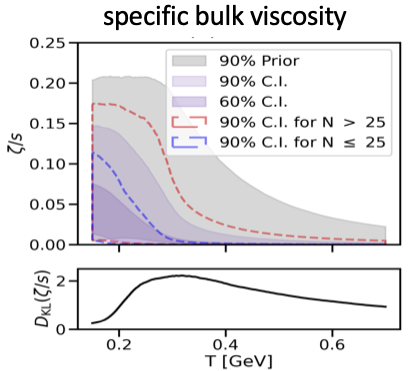
The novel Viscous Anisotropic Hydrodynamics (VAH) model can simulate relativistic heavy-ion collisions from very early times, eliminating the need for a separate far-off-equilibrium pre-hydrodynamic model. VAH was calibrated on LHC data using Bayesian tools in the BAND Software Framework. This calibration allowed us to constrain the specific shear and bulk viscosities of quark-gluon plasma up to temperatures of about 700 MeV, much higher than for any previous analysis.
Contact: Ulrich Heinz (heinz.9@osu.edu)